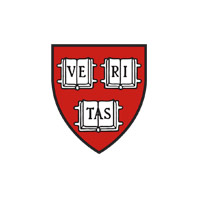 "Ask the HAA"
"Ask the HAA"
Ask the HAA, Call #1: Succession Planning
To hear the recording of the morning call, please click HERE.
To hear the recording of the evening call, please click HERE.
NOTES
Why is succession planning so important?
Encouraging term limits and officer rotation:
• Helps organizations bring in new ideas, perspectives and skill sets, and allows the organization to remain vibrant and dynamic
• Gives alumni the opportunity to connect in a meaningful way with their peers and to give back to Harvard by sharing their time, energy, and expertise
• Prevents the organization from being identified with one person, which can stymy growth and prevent alumni from becoming involved as leaders or even members
One key to succession planning is to develop a robust board.
• Size of the board is critical to the success of the organization
• Regardless of organization size, the larger and more structured the board the better the health and vibrancy of the organization
• Deep bench allows you to weather changes in volunteer commitment level due to job/family circumstances
• Diversity (schools, age, gender, race/ethnicity) of Board helps to expand network of possibilities
• Lots of people each doing a small task has a big impact in the aggregate
• Examples: Harvard Club of Cincinnati; Radcliffe Choral Society Foundation SIG; Harvard Club of Phoenix
You can’t have a deep bench if you don’t have volunteers or haven’t built a leadership pipeline. If you are trying to find volunteers or grow your pool of volunteers here are a few strategies that have worked successfully for Clubs and SIGs:
Create a call to action:
• Send an email to the whole community outlining the specific needs for various roles, job descriptions, time commitments (Ex: Harvard Alumni Entrepreneurs SIG)
• Hold a community meeting or a leadership open house for anyone interested; talk to people; describe roles and responsibilities; list current openings and have job descriptions on hand (Ex: Harvard Club of Sacramento; Harvard Club of San Francisco)
• At the end of every event, make a pitch to those who are there about getting involved (Ex: Harvard Club of Houston)
• Let people know you need help: people are hesitant to ask about opportunities because they don’t want you to think they want to take your job (Ex: Harvard Din and Tonics Alumni Foundation SIG)
Don’t underestimate the power of a personal ask:
• Sometimes you need to specifically reach out to someone you think would be good and make a personal ask, even if they have not previously been involved (Ex: Harvard Club of Broward County)
Connect to student groups on campus:
• Building connections to groups on campus forms a pipeline of both members and leaders (Ex: Harvard Club of Sweden; Harvardwood SIG)
• Have at least one current student representative on the Board to start the grooming early and to act as a spokesperson for the interest of this younger demographic group (Harvard Club of UK; Harvard Club of Austria)
Do some data mining:
• Look at alumni who are new to the community/area, and reach out to them to personally ask them to get involved with the Club/SIG (Ex: Harvard Club of Victoria)
• Keep track of who attends your events/programs and look at levels of engagement for potential volunteers
• Review your alumni list to see where people work and what skills they could bring to your Club/SIG (Ex: Radcliffe Choral Society Foundation SIG)
• Use LinkedIn groups to identify potential members, and to connect people’s interests and passions with opportunities for volunteering within your Club or SIG (Ex: Harvard Crimson Organization for Latter-Day Saint Alumni)
SIGS: Take advantage of mini-reunion opportunities around Commencement
• Use reunions and all events as opportunities to meet and get to know members and what motivated them to join the SIG
• Follow up after you learn about members to see how you can connect them to the leadership and groom potential successors
Establish regular communication with your alumni population
• It is easier to draw people in to leadership roles if the Club/SIG has regular communication with its members through a newsletter, regular email blast, active Facebook, listserv or some other regular way of keeping in touch
• If you don’t have a lot of events, share relevant news from campus to make people feel connected to and engaged with the University
